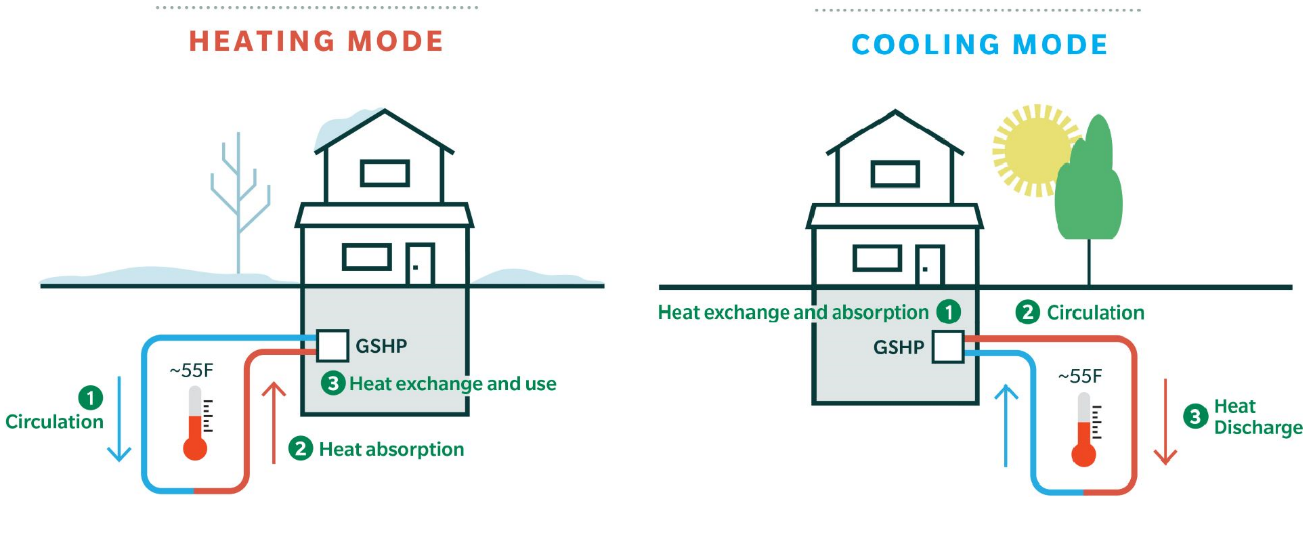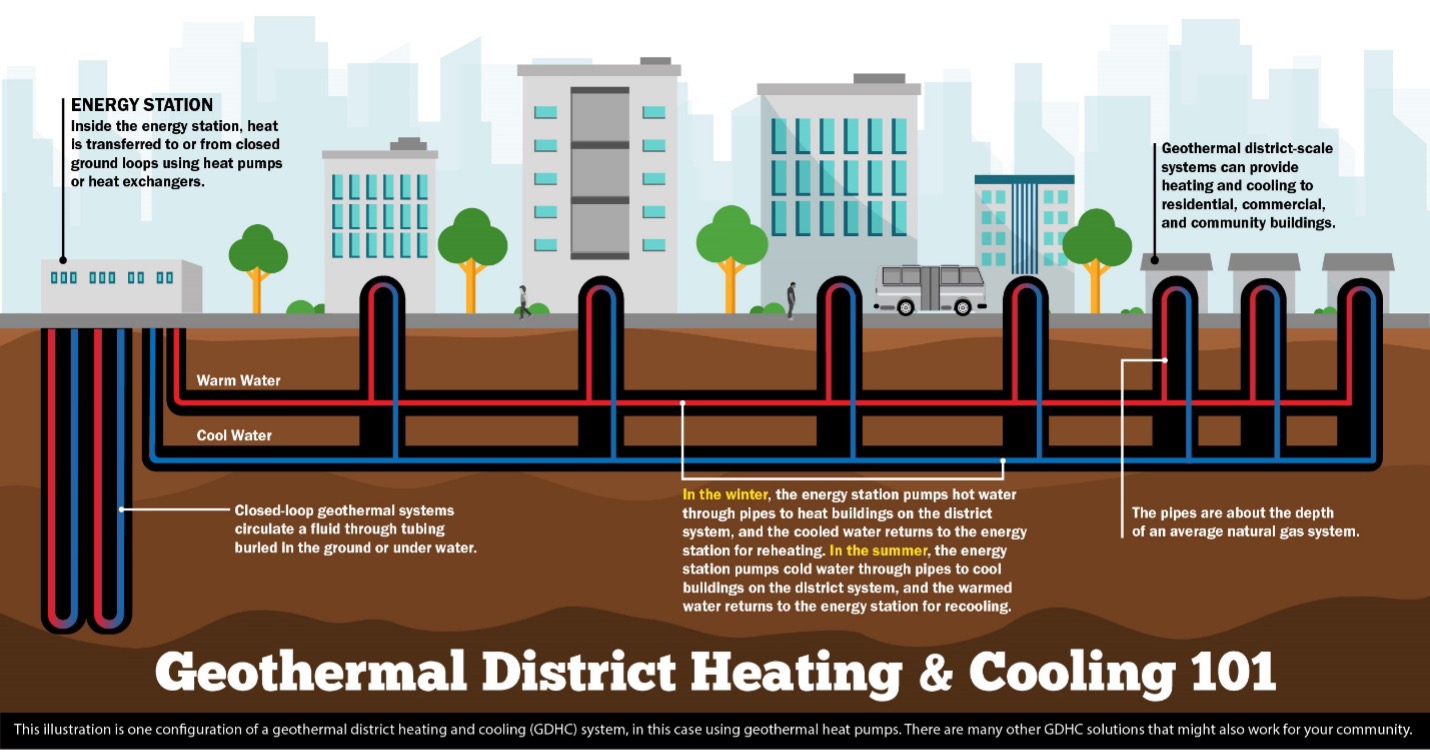
What is Geothermal Heating and Cooling
Geothermal heating and cooling systems use the relatively consistent temperature underground to move heat from the ground into indoor spaces in the winter, and from indoor spaces into the ground during the summer. In these systems, liquid flows deep into the ground through pipes, often 100-300 feet deep for single-family residential applications or around 500 feet deep for larger systems, and then to heat pumps in a building. During winter when a building needs heating, the heat pump extracts heat from the liquid in the pipes and moves it inside the building. Because the average temperature just a few feet underground is around 55° F in the Northeast, geothermal systems can effectively heat and cool buildings year-round.
Ground Source vs. Air Source Heat Pumps
When you think of heat pumps you might think of air-source heat pumps, which move heat in the air in and out of a building. Ground-source heat pumps work very similarly, using the liquid from the underground pipes to move heat in and out instead of air.
Networked Geothermal as a Community Decarbonization Solution
Geothermal systems can serve one building, or they can connect multiple buildings and move heat between buildings and the ground. These are called networked geothermal systems, geothermal district heating and cooling systems, or thermal energy networks. Areas with a mix of homes, offices, schools, grocery stores, etc. can reach very high efficiencies as they leverage both the ground temperature and the differences between the buildings’ heating needs at any given time.
CT Geothermal Design & Feasibility Project for Affordable Housing Development
From August 2023 – October 2024, NEEP worked with the Connecticut Department of Energy and Environmental Protection (CT DEEP) on a U.S. DOE-funded design and feasibility project for a geothermal heating and cooling system at a housing authority property in Wallingford, CT. The rest of the project team included The Wallingford Housing Authority, the Wallingford Electric Department, the University of Connecticut, and an MEP firm, LN Consulting. NEEP supported the project through community engagement, stakeholder facilitation, and workforce development research. In 2024, NEEP created a CT Geothermal Workforce Needs Assessment and Workforce Development Plan, as well as a case study on the process and the design. Ultimately, the team did not pursue funding to implement the design.
NEEP Resources
- Connecticut Community Geothermal Case Study: Design and Feasibility | Northeast Energy Efficiency Partnerships
- Connecticut Geothermal Industry Workforce Needs Assessment | Northeast Energy Efficiency Partnerships
- Geothermal Heat Pump Workforce Development Plan for Connecticut | Northeast Energy Efficiency Partnerships
- Community Engagement Plan: Ulbrich Heights (CT) Geothermal Pilot Project | Northeast Energy Efficiency Partnerships
Non-NEEP Resources
- Geothermal Pilot Reference Guide - Eversource Energy
- Geothermal Energy - Connecticut Department of Energy and Environmental Protection (CT DEEP)
- Ulbrich Heights Community Geothermal Project - Connecticut Department of Energy and Environmental Protection (CT DEEP)
- Geothermal Heating & Cooling | Department of Energy
- Geothermal Heat Pump Case Studies | Department of Energy


